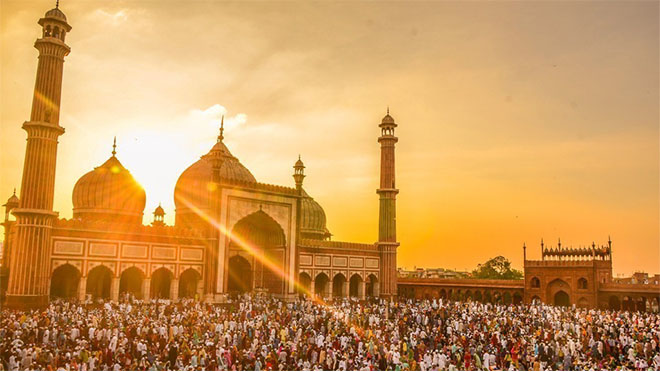JAMA MASJID
Table of Contents
HISTORY OF JAMA MASJID DELHI
Jama Masjid (Friday mosque), or Masjid e Jahannuma, is a beautiful mosque in Old Delhi. Whoever talks about Old Delhi, the first thing that comes into mind is Mosque. Whenever I go there, its artwork amazes me every time. The brightness of red sandstone and the shine of white marble are beyond explanation. Even black marble Quranic calligraphy is a masterpiece of artists.
Agra was a favourable city to be the capital of the Mughal empire because of its strategic location. Importantly, From Babur to Emperor Aurangzeb, all held their durbar to Agra. According to historical resources, Agra was congested and a vast city in the 17th century. Historians claimed it was three times greater than London. Finally, Shahjahan decided to transfer his capital to Delhi near the Yamuna river.
Notably, artists chose this site when Emperor Shahjahan decided to transfer Capital (1648) from Agra to Delhi. Architects and planners designed Red fort, Chandi Chowk, and Jama Masjid Delhi. Emperor Shahjahan wanted to build God’s house above his House (Red Fort). As a result, they chose a hillock to build the Mosque.
Moreover, They started building it in 1650 and took six years to complete it in 1656. Interestingly, Shahjahan himself appointed a priest from Bukhara (Uzbekistan). The capacity of the Mosque is 25000.
ENTRANCES: Certainly, it is free ( INR 300/- FOREIGNERS)
JAMA MASJID DELHI TIMINGS
TIMINGS: 9:00 TO 12:00 MORNING 3:00 TO 5:00 EVENING
JAMA MASJID DELHI INSIDE
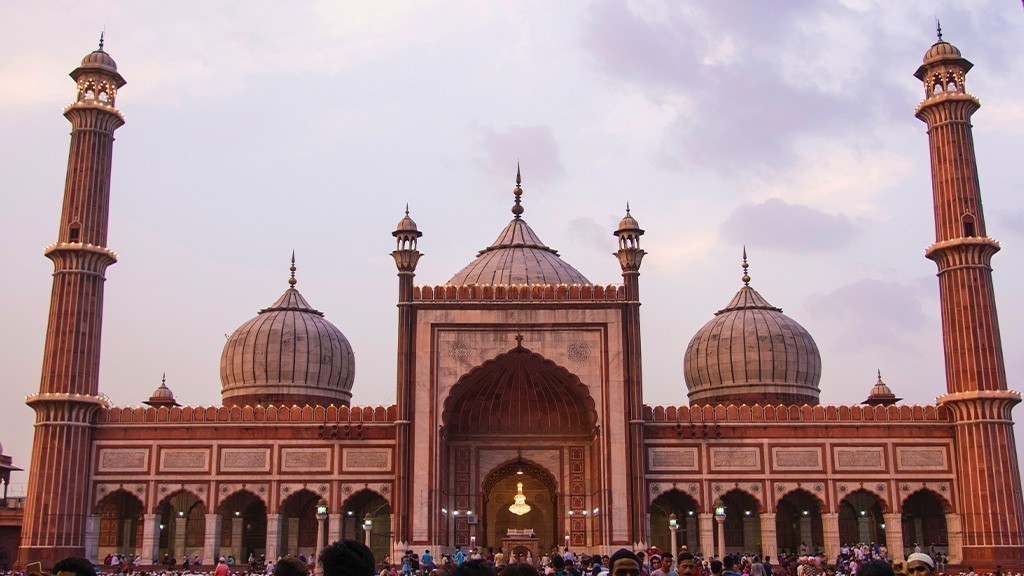
Jama masjid is very unique in terms of architecture. Indeed it is typical Mughal mosque and artwork is worth visiting. I have divided it into three parts, Entrances with courtyard, exterior of main hall, and interior of main hall. Let us talk about in details.
ENTRANCES AND COURTYARD
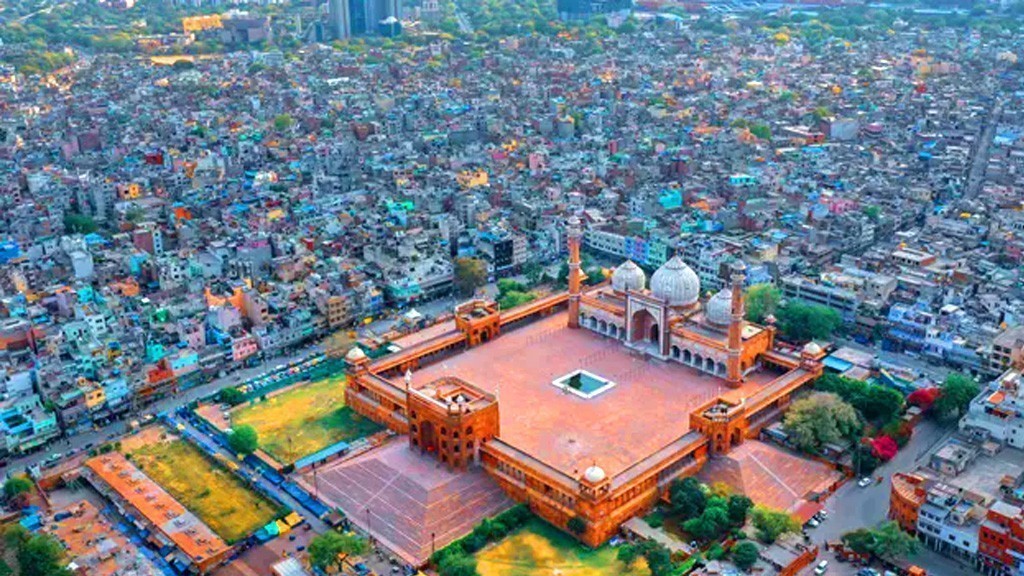
Jama masjid is unique if we talk about its architecture. Indeed it is a typical Mughal mosque, and artwork is worth visiting. I have divided it into three parts, Entrances with courtyard, the exterior of the main hall, and the interior of the main hall. Let us talk in detail.
ENTRANCES: The mosque is on a colossal hillock has three gateways to go inside. All three gateways are in the East, North, and south. Interestingly, you can not find any gateways in the west direction because it’s the mecca side. The prayer hall should always be in the west.
Moreover, the most beautiful and essential gateway is Eastern, and it is bigger than Northern and Southern. According to historians, the emperor used this gate with two stories. Interestingly, royal ladies used to pray on this gate, and it has beautiful Jharokha also.
OPEN COURTYARD: After gateways, it has an open courtyard. Importantly, Here is one thing we should keep in mind that, Friday’s afternoon prayer is a big congregational prayer, and Muslims can not pray Friday prayer in a small mosque. Friday’s prayer is a message of unity because people from different places come and pray together.
As a result, artists built a vast open courtyard to accommodate people. They used red sandstone to make it, and the pavilion surrounds the square yard.
WUZU TANK: In the center of the courtyard, there is a water tank of white marble with a fountain. On every corner, there is a white marble pillar. Interestingly, In the religion of Islam, cleanliness is paramount. As a result, people have to wash their hands, mouth, face, legs before praying.
PAVILION: The open courtyard is surrounded by a beautiful red sandstone pavilion. There are arches with decorated red pillars. Usually, when there are visitors, they stay here. Importantly, Mughal always made such a pavilion in every big building for the public to stay.
EXTERIOR OF MAIN HALL

The main prayer hall ( Al-Haram ) of Jama Masjid is on the structure’s western side. In the Arabic language, they call it Haram. The red and white design with black marble looks outstanding and is an excellent example of Mughal architecture. Interestingly, Imam (priest) leads prayer five times a day in the center of the main hall. Surprisingly, the first time they used black marble to decorate the dome. Let us talk about it in detail.
TWO MINARETS: Both minarets are octagonal at the bottom, making a round shape on the top. Artists used red sandstone to build it and white marble to beautify it. Interestingly, there is a kiosk on the top of every minaret. The height of each minaret is fourty-one (41) meters. You can buy a ticket to go to the top if you want.
Earlier, they used minarets to call prayer ( Azaan ), but now there are loudspeakers to reach people. These two minars are the symbol of Jama Masjid Delhi.
HALL: This rectangular hall has a massive arch in the center; they used red sandstone, white, and black marble to decorate it. Moreover, on the top of the arch on its left and right, two Arabic calligraphic art make the geometrical design. Interestingly, there is a white marble kiosk under this arch, where Emperor used to pray.
There are five arches on the left of the central arch and five on the right. You also can find black and white Arabic calligraphy on the top of these small arches. They decorated the pillars of the main hall with white marble. Interestingly, the floor also has an arch design. The size of the main entrance is 24 X 60 meters.
THREE DOMES: Undoubtedly, domes are essential features of any Mughal mosque. There are three domes in Jama Masjid, Big dome in the center and trim on the right and left. Interestingly, they called these domes double dome because they built a small dome and put a giant dome on it. Moreover, the first time they decorated these domes with black marble.
INTERIOR OF MAIN HALL
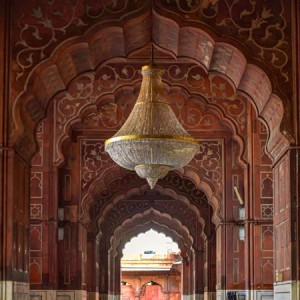
HARAM (INSIDE): The main hall has many arches inside, and in the center is a mihrab of priests. Interestingly, you will find white marble flowers on every arch, and there is also a huge chandelier. Surprisingly, they used paintings in the Taj Mahal mosque, but here they used marble to decorate.
I think Jama Masjid Delhi is the most beautiful mosque in India. If you see artwork inside, they used white and black marble with red stone is remarkable. Interestingly, the contrast of red and white stone is a perfect example of the artistic mind of those days.
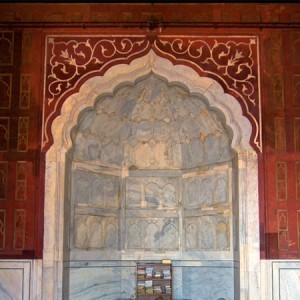
MIHRAB: In Islam, there is always one person who leads prayer. Mihrab is a big arch in the center, where Imam leads prayer, and everyone has to stand behind him. Moreover, you always find some stairs near mihrab, where he stands and gives a sermon.
Interestingly, They used natural white marble and calligraphy on the top of mihrab’s arch. Sadly, they do not renovate Jama Masjid frequently, and as a result, white marble becomes yellow. They only have renovated mihrab’s white marble and flowers. After all, the beauty of this mosque is attracting millions of visitors every year.
CALIGRAPHY
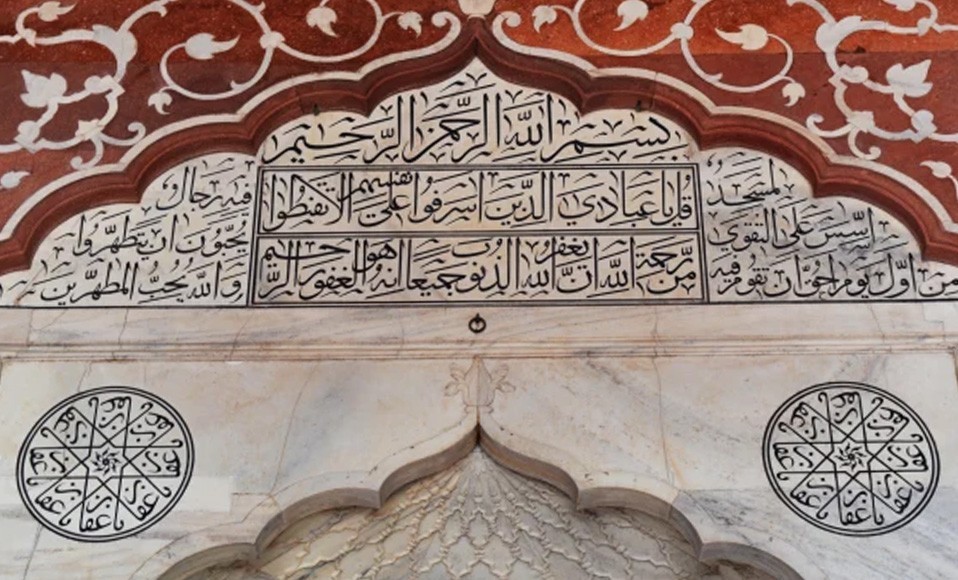
Generally, local artists used sculpture to decorate any structure. When Muslims started ruling India, they started building their structure like palaces and mosques. Interestingly, artists decided to use calligraphy instead of sculpture because it is not allowed in Islam. Earlier, they just carved white marble or any other stone. As usual, it was tough to read, so they started using black marble so that people could read.
Jama masjid used black and white marble to decorate the calligraphy design. Apart from this, they also geometrical design of Arabic latter. Interestingly, you can see on the above pic two circles, and surprisingly, there are circles, plus, multiply, star, and flower.
WHO BUILT JAMA MASJID IN DELHI
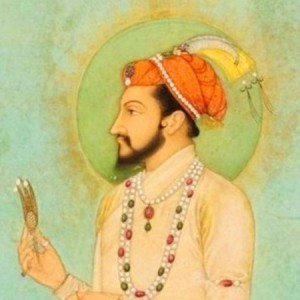
Emperor Shahjahan decided to transfer the government seat from Agra to Delhi in 1648. Surprisingly, Agra was three times bigger than London those days, leaving no space. As a result, he realized that area was not enough to govern from here and chose Delhi.
It was initially challenging to choose the sight, but finally, they decided on the river bank. Interestingly, Shahjahan wanted to build a grand and beautiful mosque (Jama Masjid) in his new Capital. There was a massive hillock near the Capital sight. They decided to make this mosque on the top of a hillock to give the height. Shahjahan himself was present when it became functional. After working six years, they completed it.
ARCHITECTURE OF JAMA MASJID
During the Mughal era, artists widely used Indo Islamic architecture. For example, They started building domes, arches, minarets, etc., but they were also using Indian elements. Interestingly, these elements are visible in Jama Masjid. You can see inverted lotus on the top of the dome and flower decoration on stones. Apart from this (Gold, Copper) finial on the top of the domes.
Jama Masjid is a classic example of Indo Islamic architecture, and the red sandstone with white marble makes it the most beautiful and largest mosque in India. There are also chattris on every corner, which is an Indian element.
WHAT IS A MOSQUE AND FRIDAY ?
The mosque is simply the place of worship for Muslim people. Notably, In Islam, there is a timing rule; each person has to pray five times a day at a fixed time with other people. When people pray together in the mosque on time, they call it Jamat. Interestingly, the first mosque of Islam was ( Masjid e Quba) in Saudi Arabia. Islam gives a message of unity and equality and orders people to pray together irrespective of caste, color, and profession.
Friday is a big day for Muslim people around the world. They pray together in a big mosque (Jama Masjid) to meet each other. Interestingly, it is a holiday in the Arab world. We can say Friday is meeting the of one residential society. Eid (prayer once a year) is the meeting of the whole city. Haj (pilgrimage) is the meeting of entire Muslims around the world.
FACTS OF JAMA MASJID?
1. Emperor Shahjahan built this Jama Masjid when he decided to transfer Capital from Agra to Delhi.
2. They started building it in 1650, took six years, and completed it in 1656.
3. People also call it Masjid e Jahanuma or Friday mosque.
4. The capacity of the mosque is 25000 people.
5. Shahjahan attended Eid Prayer here the first time.
6. The present priest always carries Bukhari as a surname because Shahjahan himself made his family chief priest.
PLACES NEAR JAMA MASJID
CHANDNI CHOWK: The most famous market of Delhi is next to Jama Masjid. Interestingly, you can enjoy delicious street food and many things to buy.
FAMOUS FOOD: Urdu Bazar and Matia mahal have many restaurants. If you are a non veg food lover, this is heaven. Moreover, you can try delicious kebabs in the Urdu bazaar.
RED FORT: Iconic red fort of Delhi is near Jama Masjid. Shahjahan built this fort in 1648. There are many palaces to visit inside of the fort. In front of the red fort, there is Chandni chowk.
RAJ GHAT: It is the cremation place of Mahatma Gandhi. The father of the Nation died in 1948. Interestingly, there are many gardens also.
FEROZ SHAH KOTLA: This famous fort of Sultan Feroz Saha Tughlaq of the 14th century is near Jama Masjid Delhi. If you are Delhi’s Sultanate history lover, it is the best place for you.
HOW TO GET TO JAMA MASJID?
Old Delhi is central Delhi, so there is no issue with connectivity. There is a metro station also for Jama Masjid ( violate line ). There are many local bus services available also. If you have your car, you should park your car in Red Fort parking and take a rickshaw to visit these places.
